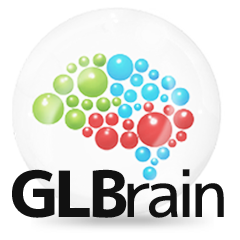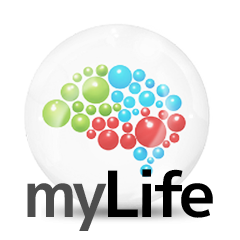Yet, in practice, many networks—especially high-traffic DeFi platforms—face persistent threats like front-running, censorship, and centralized validator control. That’s where Fair, often known through the term Fair Blockchain, introduces a paradigm shift. It crystallizes a future where decentralized finance and AI-powered smart contracts operate fairly, privately, and securely.
The MEV Challenge and Why it Impacts Decentralization
Maximal Extractable Value (MEV) refers to the hidden profits some actors extract by manipulating the ordering of transactions—front-running trades, sandwich attacks, or censoring orders. MEV functions like an invisible tax on users by giving validators or bots power to exploit unencrypted transaction data. Over time, this diminishes the power of ordinary users and concentrates value in fewer hands. In essence, MEV represents centralizing pressure on what should be a decentralized system.
Traditional blockchains lack robust internal defenses against MEV. They may rely on off-chain tools, trust-based delays, or commit-reveal schemes—but these often require coordination or trusted third parties, diluting both fairness and decentralization.
Fair’s Built-in MEV Resistance Through Threshold Encryption
Fair addresses this directly by embedding Blockchain-Integrated Threshold Encryption (BITE) at the consensus layer. When a transaction is submitted, it remains encrypted until after the block is finalized. Validators cannot read, reorder, or censor encrypted transactions—making classic MEV vectors cryptographically impossible.
Clients encrypt transaction details before submitting them to the network. Validators receive this encrypted data and can include it in blocks without knowledge of its content. Only after the block is finalized do a distributed committee of nodes decrypt the transactions for execution. No front-running, no sandwiching, no leakage.
This design removes the incentives for centralized actors to exploit block ordering. It shifts the system from a trust-minimized to a trust-free regime—even for high-speed, AI-driven DeFi.
FAIR EVM: Performance that Doesn’t Sacrifice Decentralization
Fair layers its MEV-resistant architecture atop FAIR EVM, a high-performance, C++-based Ethereum Virtual Machine variant, built for parallel execution and instant finality. Unlike Ethereum’s single-threaded runtime, FAIR EVM supports asynchronous, multi-threaded execution, optimized for maximum throughput and low latency.
Designing this specialized virtual machine ensures that development remains compatible with existing Solidity tooling, execution remains decentralized, and security is preserved through the same encryption methods used at consensus.
In other words, the Fair Blockchain framework ensures that high performance is achieved without sacrificing decentralization. It enables high-frequency, AI-agent–powered protocols while keeping operations trustless and equitable.
Enhancing Security With Privacy and Confidential Execution
Security in decentralized systems not only means resisting manipulation but also protecting confidentiality and reducing attack surfaces. Fair leverages BITE to enable on-chain private computation: transactions remain confidential until the block is irreversible.
This encrypted execution capability prevents data leakage. Strategy details or sensitive DeFi positions remain hidden until after block finality. Unlike traditional public blockchains, where transaction contents are exposed before inclusion, Fair ensures that confidential operations remain safe from front-running and insider attacks.
By integrating encryption into the consensus mechanism itself, Fair eliminates a wide range of vulnerabilities that adversaries often exploit on competing networks.
Democratizing Validator Participation
The architecture of Fair encourages broader validator participation. Since encryption removes the ability to manipulate transactions, validators no longer require sophisticated infrastructure or custom MEV strategies to profit. More participants—regardless of scale—can contribute to network consensus and security without centralized gatekeeping or unfair advantages.
Fair also introduces a dual-token model where validators are incentivized across networks, encouraging sustainable and decentralized validator onboarding. This approach helps reduce the risk of control concentration and fosters a more equitable validator ecosystem.
Ecosystem Integration and AI-Driven Protocols
Fair does not operate in isolation. It is designed for seamless integration with existing ecosystems and interoperable platforms. Chains that adopt the FAIR SDK gain access to encrypted execution, instant finality, and shared liquidity, forming a networked layer of fair and secure systems.
AI agents are an increasingly important frontier in decentralized finance. These automated agents—used for executing trades, managing liquidity, or analyzing data—are especially vulnerable to data leakage on traditional chains. On Fair, these agents operate in a secure, encrypted environment where strategies and transactions are hidden from external observers until block finalization.
This enables a range of new applications including limit-order protocols, prediction markets, AI-powered arbitrage systems, and encrypted auctions. All of them operate under a privacy-first design philosophy, ensuring trustless fairness for all participants.
Preventing Censorship and Reducing Centralization Risks
Censorship and centralization risks emerge when validators or network participants can selectively exclude or delay transactions. Fair mitigates this threat by ensuring that transaction contents are encrypted until finalized. Validators cannot choose to censor specific actions they can’t read or identify in the first place.
This design guarantees censorship resistance without relying on social or political measures. It shifts the burden of trust from human actors to cryptographic protocols. Even powerful validators cannot impose unfair control or preferences over the network.
Architecture-Driven Resilience
Security and decentralization in Fair are reinforced by architectural choices that avoid single points of failure. The decryption process is committee-based and distributed. There is no single mempool vulnerable to surveillance or extraction. Parallelized execution through FAIR EVM allows for efficient, low-latency processing without bottlenecks or centralized sequencing.
The use of encryption ensures that block ordering remains fair and unexploitable. Combined with validator diversity, a robust token model, and AI-friendly tooling, this makes Fair resilient against many systemic threats that plague traditional smart contract platforms.
DeFi and Agentic Use Case Spotlight
Consider a decentralized exchange offering encrypted limit orders. On most blockchains, these orders would be visible in the mempool and exposed to MEV bots. On Fair, orders are encrypted until execution. They are matched and settled in a tamper-proof, private way.
The same holds true for AI trading agents. These programs rely on strategic logic, often proprietary and vulnerable to leaks. Fair allows agents to execute in a protected environment where their decisions remain confidential until the block has been finalized. This protects innovation, boosts market efficiency, and opens new possibilities for on-chain autonomy.
Why the Fair Blockchain Matters
Fair Blockchain isn’t just another network—it’s a trustless infrastructure designed to embed fairness, privacy, and decentralization into the core of every transaction. By eliminating MEV through encryption, enabling secure AI-driven interactions, and democratizing validator participation, Fair creates a more open and equitable foundation for Web3 applications.
Fair represents a significant evolution in how blockchains can function. It doesn't merely claim to be decentralized—it enforces decentralization through cryptographic proofs and protocol-level defenses. It doesn't just encourage fairness—it makes unfair behavior mathematically impossible.
With the growing reliance on automation, high-frequency trading, and smart contract AI, Fair becomes essential not only for DeFi security but for ensuring that the next generation of decentralized apps are built on integrity and trust.
Conclusion
Fair enhances decentralization and security in ways that go beyond traditional blockchain design. By embedding threshold encryption directly into consensus, enabling parallel execution through FAIR EVM, and promoting validator diversity, Fair transforms abstract ideals into operational reality.
This isn’t decentralization as theory—it’s decentralization as architecture. With Fair, users, developers, and automated agents all interact in an environment where fairness is guaranteed not by social promises but by protocol design. The result is a blockchain ecosystem that is faster, safer, more private, and truly decentralized.
Fair Blockchain shows that the future of Web3 isn’t just about speed or scalability—it’s about building systems that are fair from the ground up.



Share the News